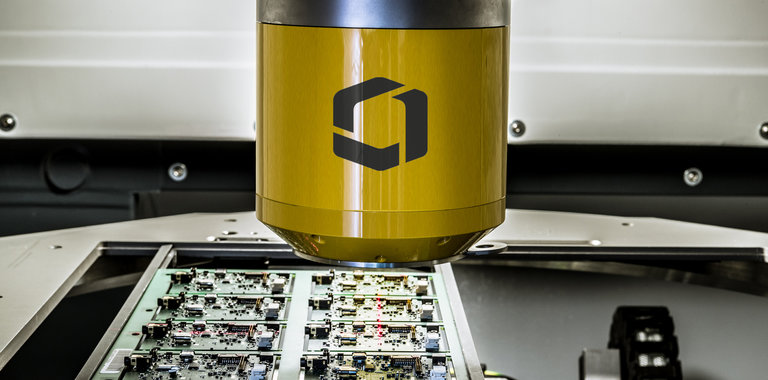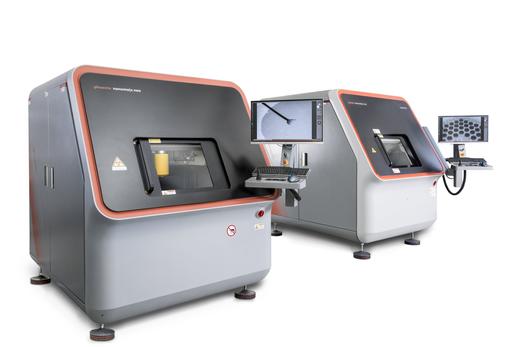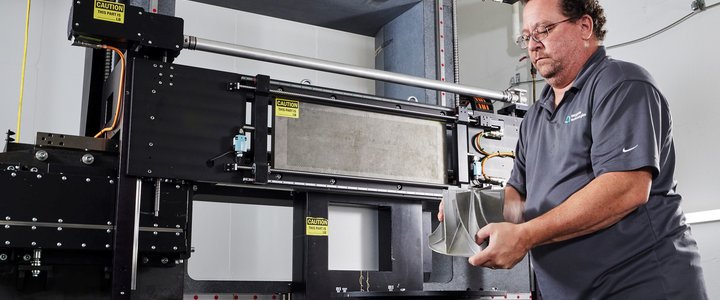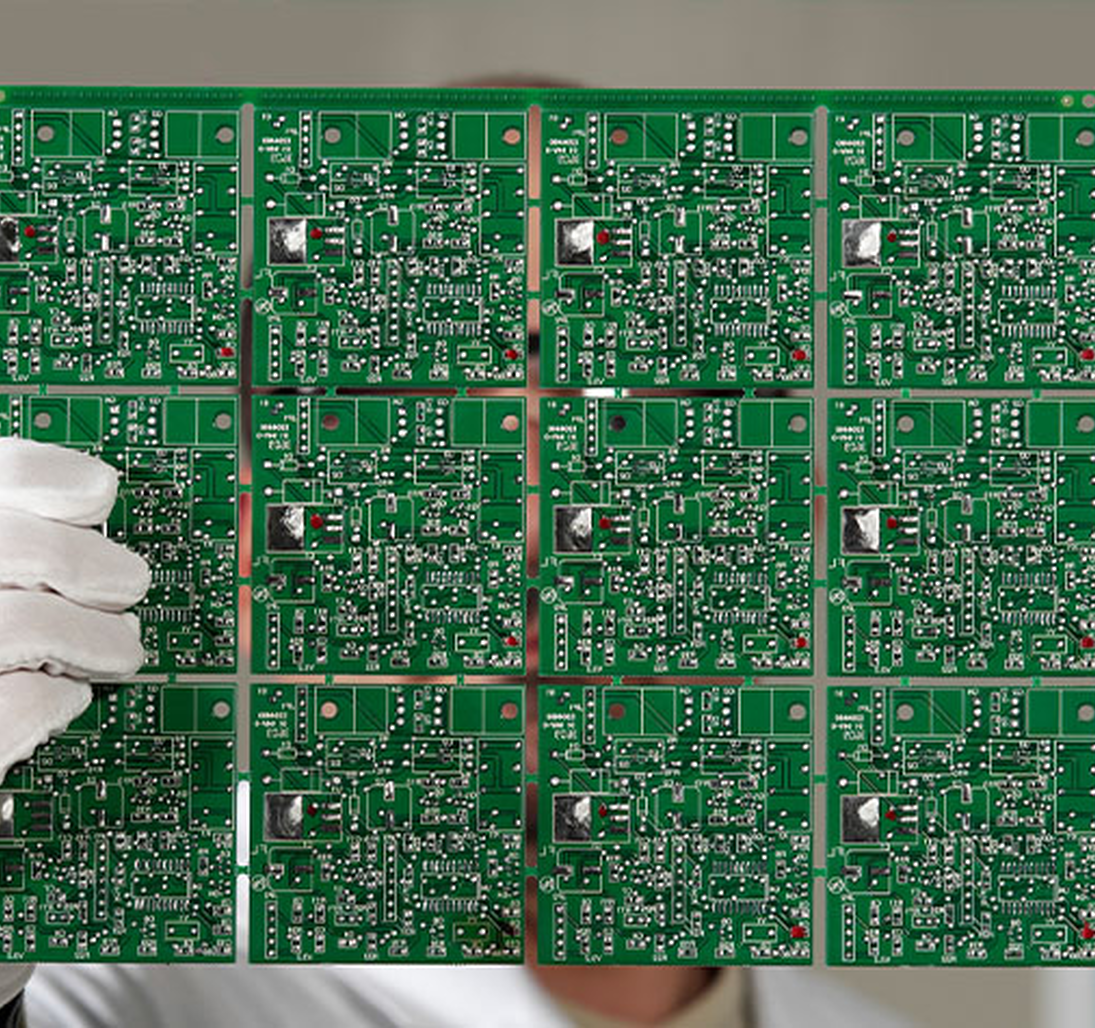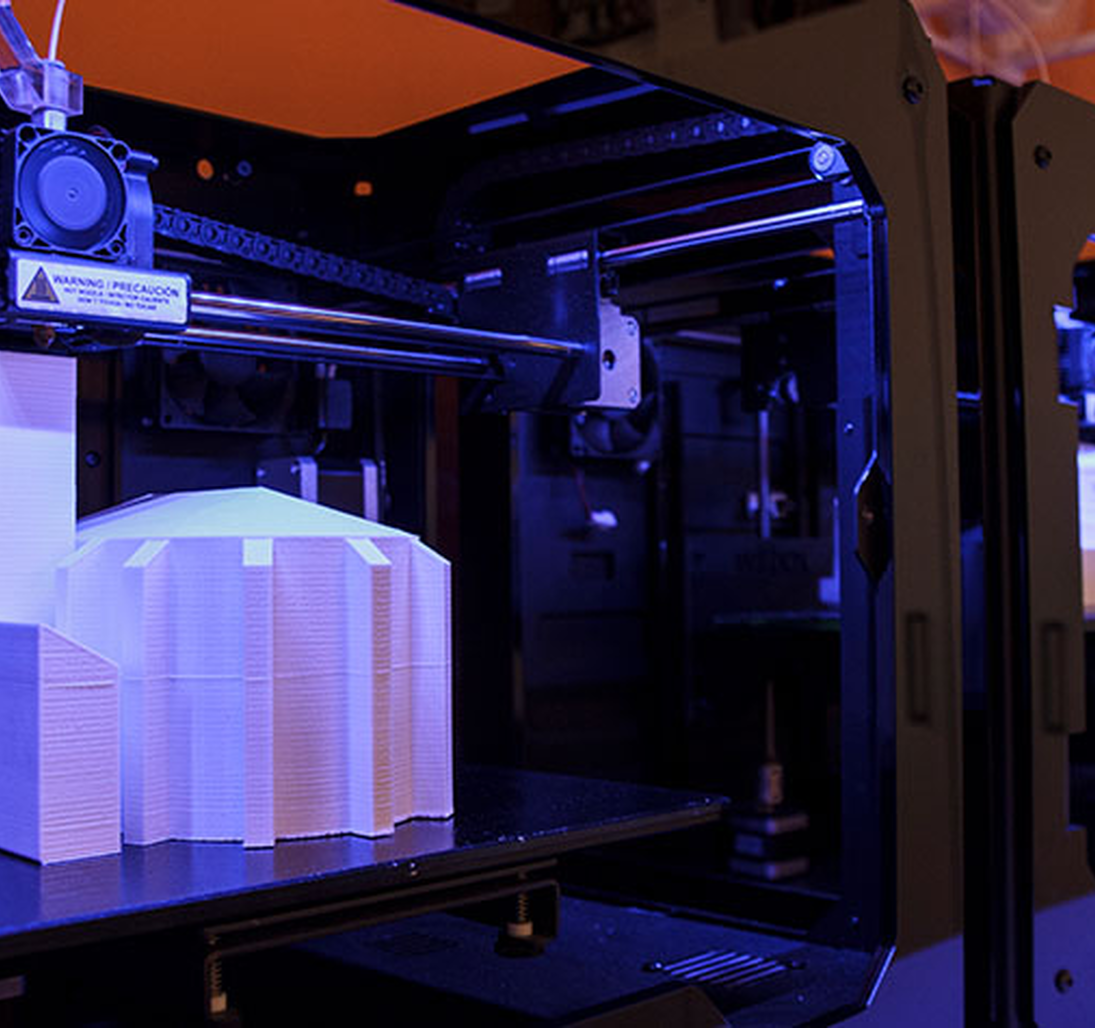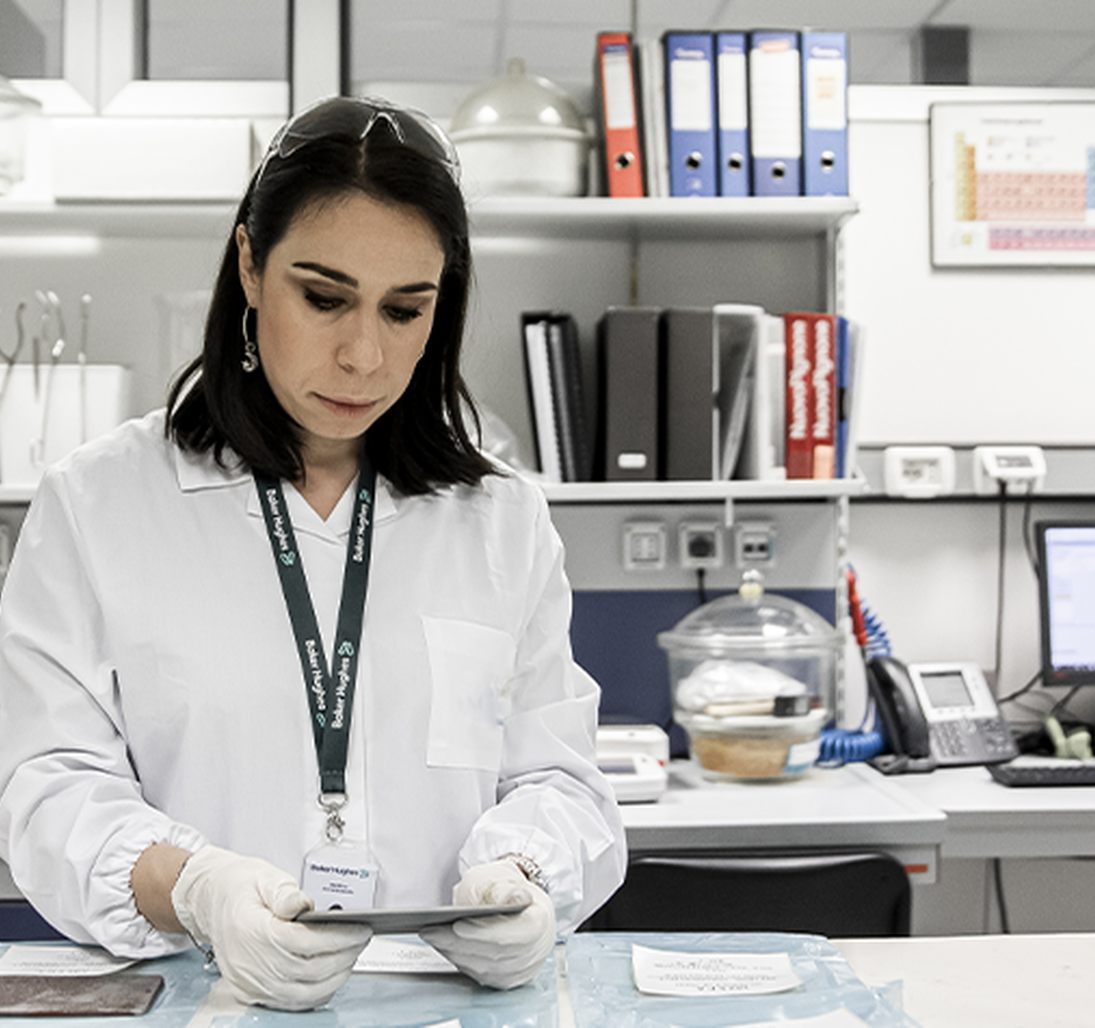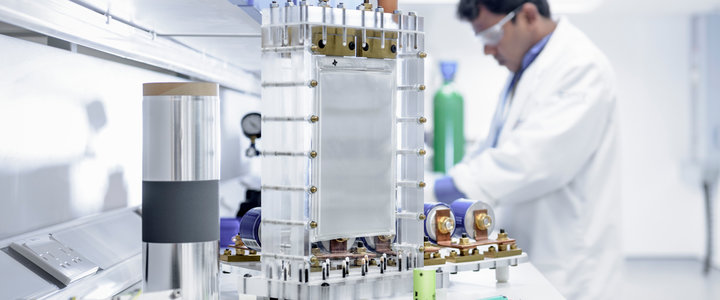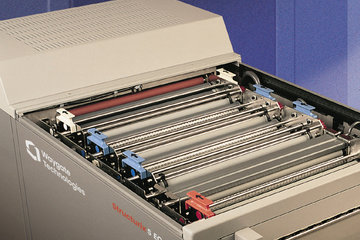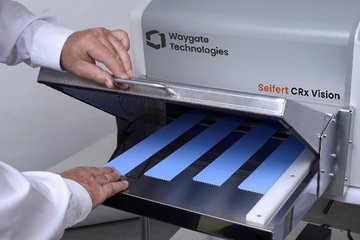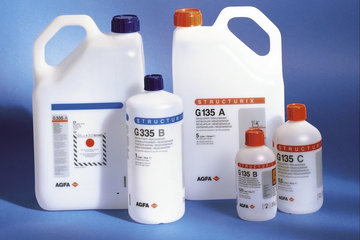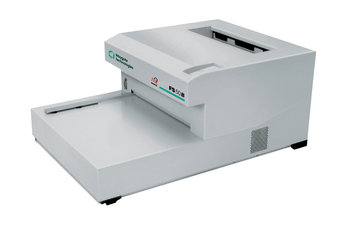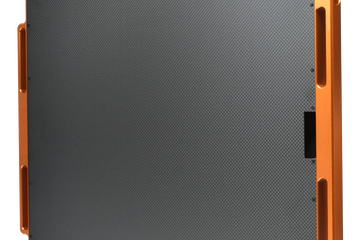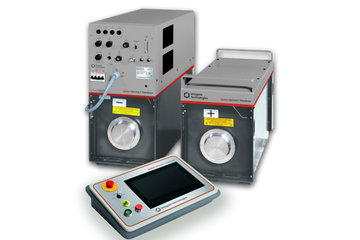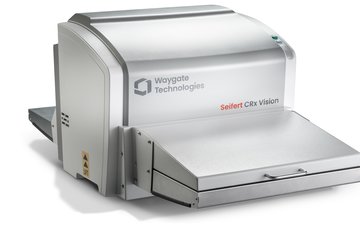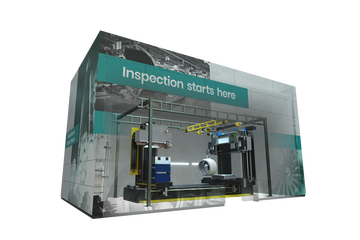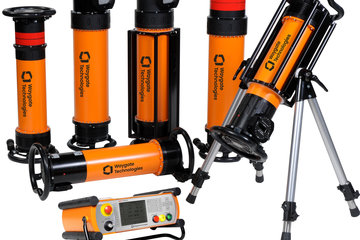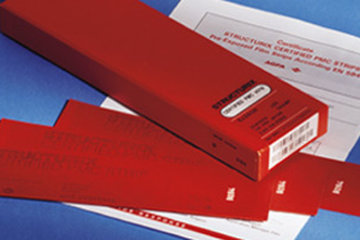A Waygate Technologies tornou as soluções de testes radiográficos (RT) e de tomografia computadorizada (TC) mais acessíveis ao mundo industrial, permitindo que você tenha tranquilidade e, ao mesmo tempo, aproveite a economia de custos de ensaios não destrutivos (NDT).
Com a mais ampla gama de soluções de inspeção por raios X e tomografia computadorizada disponíveis atualmente, desde filmes convencionais móveis, soluções de radiografia de campo digital e computadorizada (CR e DR) até sistemas de inspeção por raios X 2D e tomografia computadorizada 3D, trouxemos inspeções de tomografia computadorizada e metrologia para a área de produção, projetamos as soluções de digitalização de raios X mais robustas, produtivas e confiáveis e muito mais. Tudo para ajudar você a poupar tempo e dinheiro e, ao mesmo tempo, entregar o produto mais seguro e confiável possível.
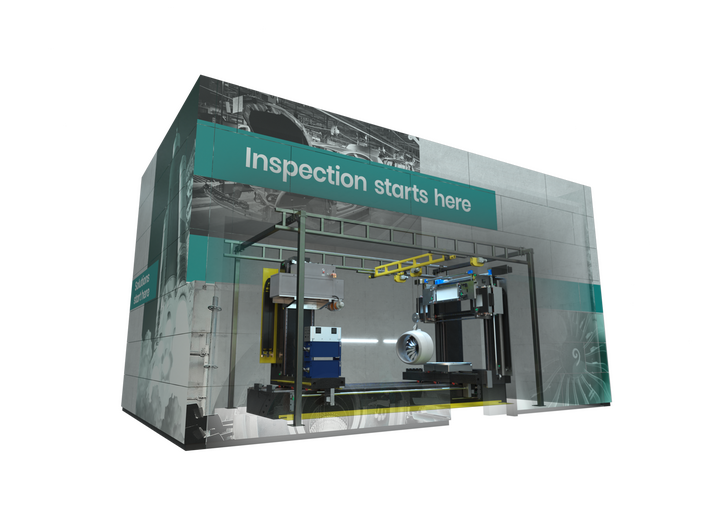
Automatizando inspeções no chão de fábrica
A poderosa tecnologia de CT e inspeção de raio X da Waygate Technologies não se destina mais a apenas ambientes de laboratório.
Com o suporte de nossa equipe experiente, podemos ajudá-lo a integrar as inspeções de 2D e 3D em seus processos de fabricação para revelar rapidamente defeitos ocultos, alterações na espessura, desvios de montagem e outros componentes que de outra forma ficariam invisíveis.
Reduzindo erros, aumentando a produtividade, melhorando a qualidade e economizando tempo.
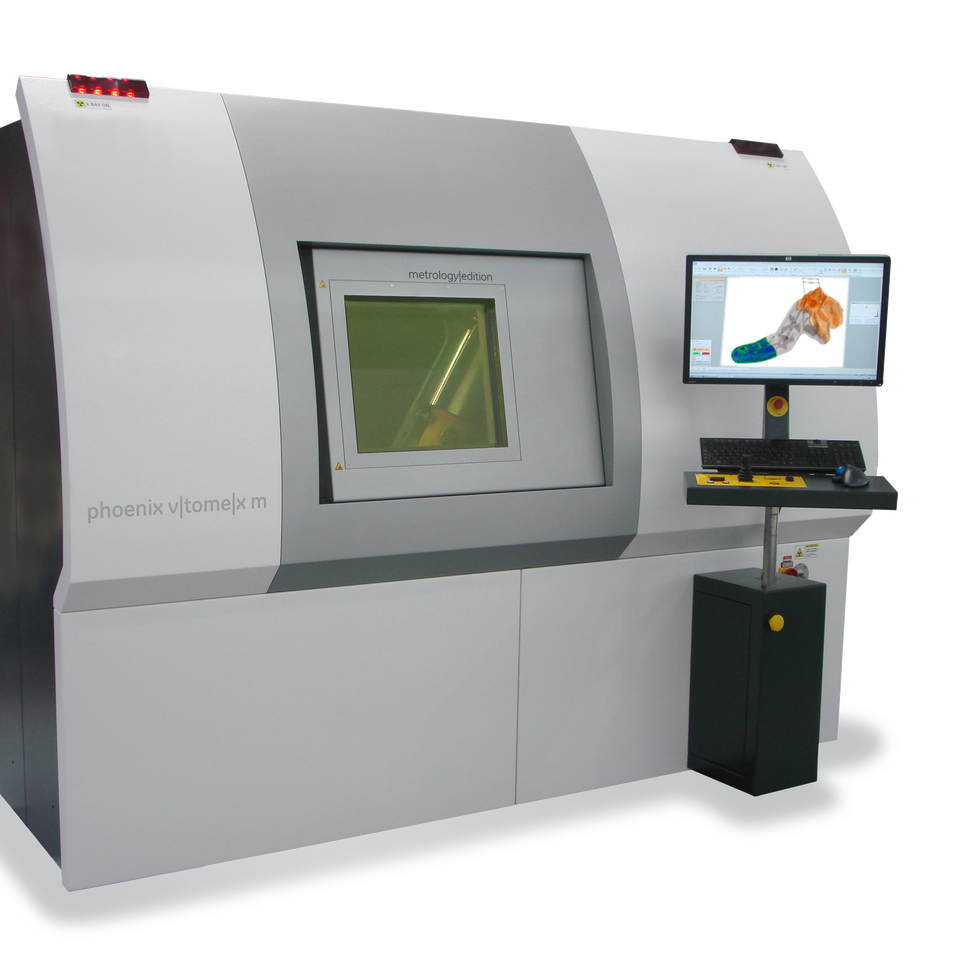
Solução de NDT para tranquilidade
Mesmo nos setores e ambientes mais exigentes, nossa coleção diversificada e comprovada no mundo todo de soluções móveis e fixas para inspeção radiográfica industrial oferecem resultados rápidos e confiáveis.
Onde quer que você precise realizar ensaios não destrutivos (NDT): no laboratório, no chão de produção ou até mesmo no campo, a Waygate Technologies tem uma solução que permitirá que você tenha o mais alto nível de precisão do jeito mais eficiente possível.
Com inovações únicas, tecnologia de detector exclusiva e tempos de exposição mais curtos, você pode obter resultados de inspeção precisos necessários para ter os mais altos níveis de segurança e produtividade.
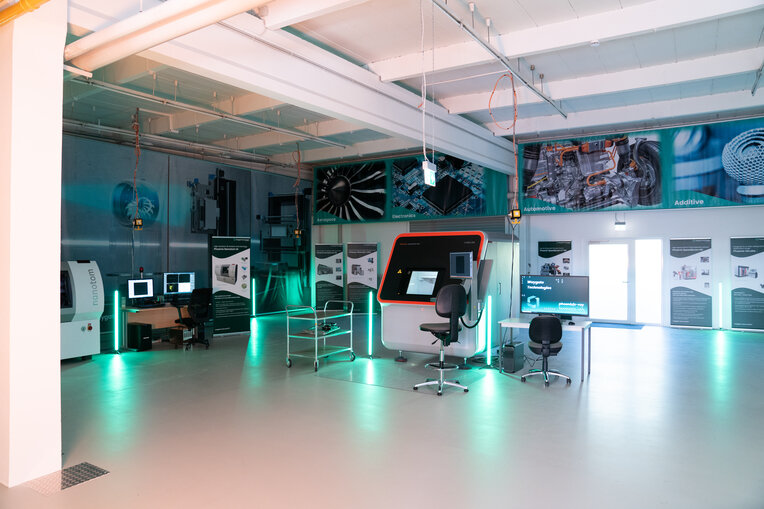
Oferecendo experiência e tecnologia onde e quando você precisar
A Waygate Technologies também oferece o uso sob demanda de nosso equipamento de radiografia industrial comprovado e de última geração em nossos Centros de Soluções para Clientes (CSC) em todo o mundo.
Veja e experimente nossas mais recentes tecnologias de inspeção de CT 2D e 3D por raio X ou envie-nos suas peças e cuidaremos de suas necessidades de inspeção.
Desde a inspeção de uma única peça ou protótipo até treinamentos e análise de dados, estamos aqui para ajudar.
Solução duradoura
As nossas soluções de serviço fornecem suporte de última geração durante o ciclo de vida do nosso equipamento.
Desde a instalação até à desmontagem, a nossa equipa fornece serviços proactivos e preditivos, bem como a otimização do desempenho a longo prazo para maximizar os resultados da sua operação.
Resolver os desafios mais difíceis dos Ensaios Não Destrutivos (NDT) na sua indústria
As inspeções representam um enorme investimento em um produto. Nós as transformamos em valor agregado, ajudando a otimizar processos, maximizar o tempo de atividade, prever falhas e melhorar o design do produto.
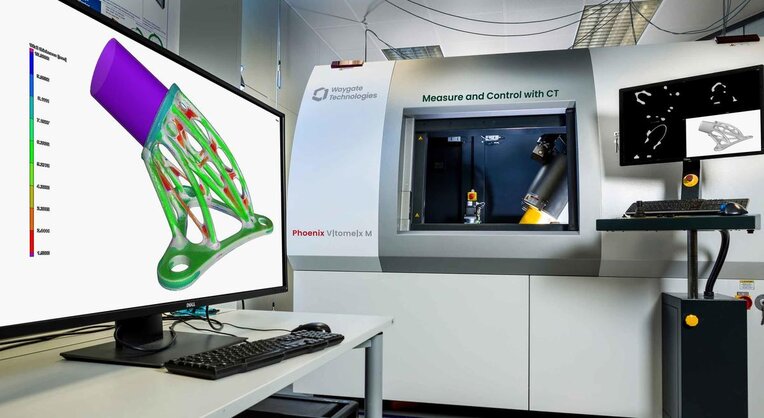
Scanners de raio X e CT industrial
Uma variedade de soluções de inspeção por raio X 2D e tomografia computadorizada (CT) 3D para muitas aplicações de inspeção, de tarefas de metrologia no laboratório até inspeções de CT em linha de alto rendimento no chão de fábrica. Inspecione com precisão as matérias-primas, protótipos, fundições de metal leve, baterias, eletrônicos, moldagem por injeção de plásticos, peças manufaturadas de aditivos e montagens finais com facilidade e precisão nunca antes possíveis.
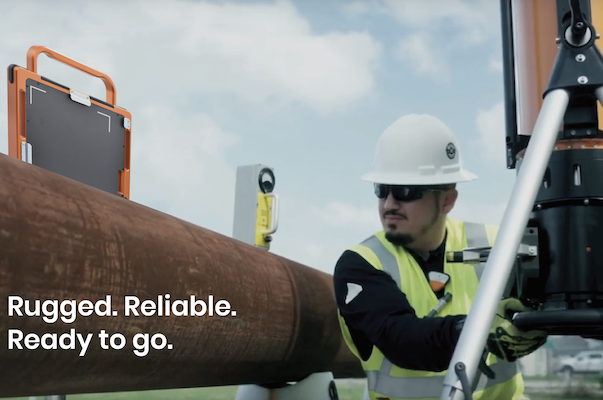
Equipamentos e software de radiografia digital
Soluções de imagens rápidas e consistentes, incluindo equipamentos e software de DR (radiografia digital), CR (radiografia computadorizada) e FS (monitoramento de filmes). Obtenha inspeções mais precisas e maior rendimento, reduzindo custos e o impacto no meio ambiente.
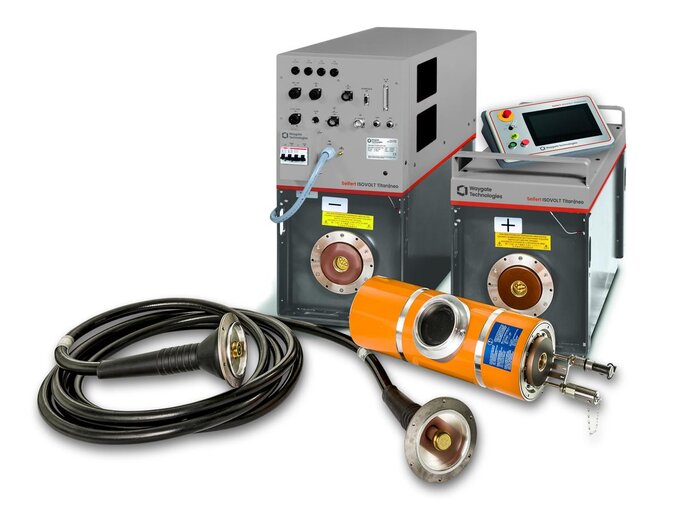
Tubos e geradores de raio X industrial
Equipamento de raio x comprovado e poderoso, incluindo geradores e tubos de raio X portáteis, móveis e fixos, projetados para oferecer a mais alta taxa de transferência, qualidade de imagem e durabilidade, construídos para durar e melhorar a produtividade no campo.
Altas doses de raios X e tempos de exposição mais curtos significam maior produtividade de inspeção e menores custos operacionais, ao mesmo tempo em que fornecem os resultados mais precisos possíveis.

Filmes, equipamentos e suprimentos de raio X industrial
Filmes radiográficos, equipamentos de processamento, produtos químicos e ferramentas de garantia de qualidade funcionam perfeitamente juntos para inspeções consistentes de alta qualidade, não importando a complexidade dos seus desafios de testes.
Oferecemos soluções de filmes de raios X para aplicações padrão e especiais, juntamente com uma série de tubos, geradores e scanners para cobrir qualquer cenário de testes radiográficos (RT) que você possa ter.
O Ensaio Radiográfico (RT)/Inspeção de Raios X enquadra-se no âmbito dos ensaios não destrutivos (NDT) e é um método que examina a amostra alvo penetrando-a com raios X e, ao fazê-lo, destaca os desvios na densidade do material que podem assinalar uma imperfeição que tem de ser tratada.
A radiografia utiliza raios X e raios gama para produzir uma imagem radiográfica da amostra alvo, permitindo ao técnico observar quaisquer alterações na espessura do material, defeitos internos e de superfície, e até mesmo detalhes de montagem (ou seja, soldaduras, juntas, conectores) para garantir os mais elevados níveis de qualidade e segurança na sua produção.
Uma das principais vantagens dos Ensaios Radiográficos (RT) é o facto de gerarem um registo permanente e em papel (no exemplo da película de raios X) do exame de uma determinada amostra alvo. No exemplo de um sensor/detetor digital, o registo é digital e pode ser armazenado local ou remotamente, não necessitando das necessidades de processamento e armazenamento associadas às películas de raios X.
O que são os raios X?
Os raios X são uma forma altamente energética de radiação electromagnética com um comprimento de onda na gama de 1nm a 1 pms, aproximadamente 1000 a 1.000.000 vezes inferior ao comprimento de onda da luz. Devido ao facto de serem altamente energéticos, os raios X são capazes de atravessar materiais que absorvem a luz visível normal.
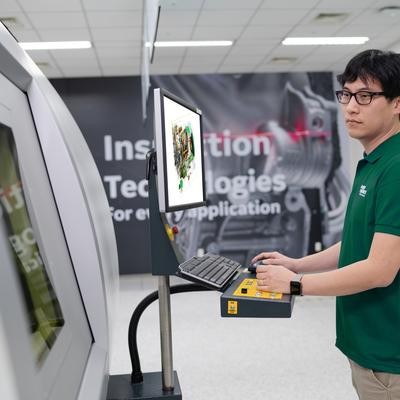
Em geral, os sistemas de inspeção por raios X são constituídos por um compartimento seguro contra radiações, o armário de proteção contra radiações, que contém, em alinhamento linear, o tubo de raios X e o detetor de raios X. Uma unidade de manipulação controlável à distância permite ao utilizador posicionar a amostra dentro do feixe. A imagem final dos raios X é apresentada num monitor para processamento computorizado da imagem. Além disso, o sistema de raios X pode ser equipado com um programa eletrónico de controlo que permite a inspeção automática da amostra. A imagem de raios X mostra as características do objeto com base nas diferenças de densidade do material.
Parte do espetro de raios X é absorvido ao passar por um objeto. Quanto mais espesso ou mais denso for o objeto, mais raios X são absorvidos e não passam. Os raios X que atravessam o objeto atingem um detetor onde é criada uma imagem de raios X. Esta imagem é composta por diferentes tons de cinzento, dependendo da intensidade dos raios incidentes: As partes do objeto que são mais espessas ou os materiais com maior densidade, como o ferro, o cobre e o chumbo, aparecem mais escuros do que os materiais menos densos, como os plásticos, o papel ou mesmo o ar.
Esta película é depois processada numa câmara escura - tal como uma película fotográfica típica - e os vários graus de radiação captados pela película são representados como diferentes valores de branco e preto. Os raios X não absorvidos pela amostra alvo causarão a exposição do detetor radiográfico. Estas áreas aparecerão escuras. As áreas que absorveram níveis mais altos devido a um material mais absorvente ou mais denso aparecerão claras.
Desta forma, as regiões da amostra alvo onde a densidade uniforme foi alterada por imperfeições, tais como porosidade, fissuras ou desalinhamento, aparecerão como linhas escuras, facilitando assim a sua deteção por um técnico especializado.
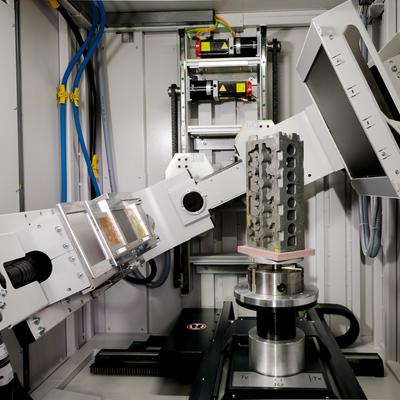
O Ensaio Radiográfico (RT) é utilizado principalmente no ensaio e classificação de soldaduras em tubagens, recipientes sob pressão, contentores de armazenamento, condutas e soldaduras estruturais.
Na realidade, tudo o que é unido por uma soldadura e que se espera que suporte algum tipo de pressão ou carga é sujeito a ensaios radiográficos para garantir a integridade das soldaduras.
Outros objectos testados incluem peças maquinadas, chapas metálicas ou paredes de tubos (especialmente quando a corrosão é uma preocupação).
As cerâmicas, peças fundidas de metais leves ou peças aditivas, como as utilizadas nas indústrias aeroespacial e automóvel, também são testadas por radiografia.
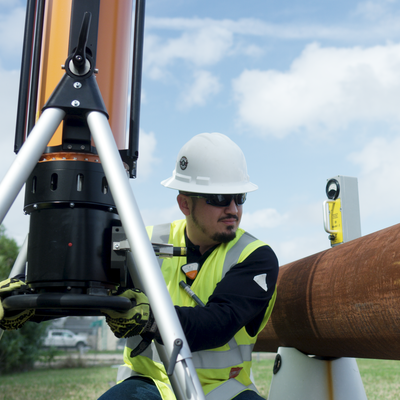
Os testes radiográficos (RT) podem ser efectuados através de raios X ou de raios gama. Os raios X são produzidos através de um tubo de raios X, enquanto os raios gama são produzidos pela introdução de um isótopo radioativo.
Estas fontes de radiação utilizam níveis de energia muito mais elevados do que os associados às ondas electromagnéticas.
Devido à radiação ionizante envolvida nos exames radiográficos, é importante certificar-se de que são comunicadas e cumpridas as directrizes de segurança adequadas, de modo a evitar a exposição.
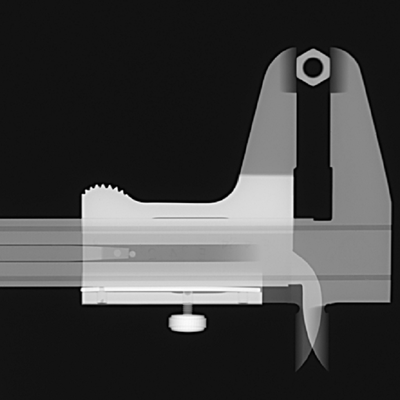
Os Ensaios Radiográficos (RT) oferecem várias vantagens em relação a outras formas de NDT. Algumas dessas vantagens são
- um registo do exame que pode ser feito em filme ou digitalmente
- capacidade de examinar toda a amostra
- um nível mais elevado de identificação de um defeito
- um nível mais baixo de competências exigido aos operadores e inspectores
Um técnico de radiologia bem treinado pode não só localizar com precisão um defeito com RT, mas também identificar o seu tipo, tamanho e localização.
No que diz respeito às desvantagens, a mais óbvia é o facto de estar a lidar com materiais relativamente perigosos que podem causar efeitos adversos a longo prazo na saúde quando expostos à radiação.
Além disso, as soluções de RT tradicionais, especialmente as baseadas em película, requerem uma quantidade significativa de tempo antes de poderem gerar uma imagem utilizável, alongando assim o seu ciclo de produção.
Esta é uma das razões pelas quais muitas organizações estão a adotar detectores digitais que evitam o tempo de processamento associado à película de raios X tradicional.
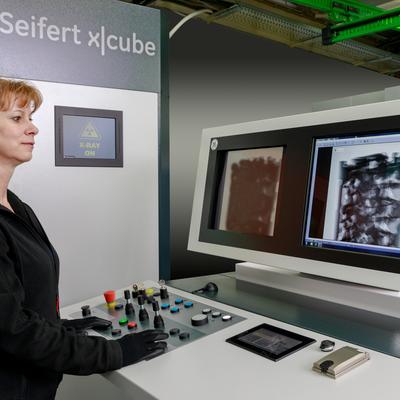
Geradores de raios X
Os geradores de raios X produzem raios X através da emissão de electrões no vácuo. Depois de atingirem um material alvo, os raios X são emitidos e direccionados para a amostra alvo. Na amostra, os raios X são absorvidos ou dispersos de acordo com o material e a densidade do alvo. Após terem atravessado a amostra alvo, os fotões são captados por um detetor, como uma película de raios X ou um detetor digital.
Conversão digital
Atualmente, muitas organizações estão a mudar da radiografia tradicional baseada em película para uma solução baseada em sensores digitais, num esforço para poupar tempo, reduzir custos e melhorar o desempenho geral dos NDT.
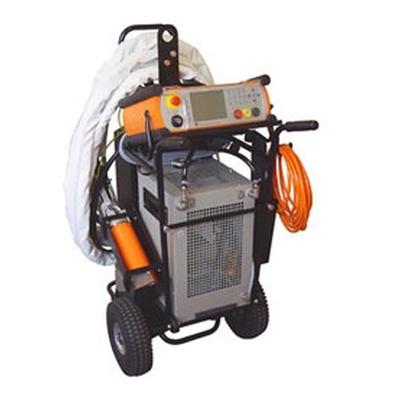
Os Ensaios Ultra-sónicos (UT) e os Ensaios por Correntes de Foucault (EC T) são dois dos principais métodos de NDT actuais devido à melhor qualidade do sinal, às opções de sondagem flexíveis e ao facto de não envolverem materiais radioactivos ou produtos químicos perigosos.
O UT baseia-se em ondas ultra-sónicas para sondar através da sua amostra alvo e detetar quaisquer desvios na mesma, enquanto que com o ECT, uma corrente de electrões atravessa a sua amostra alvo, gerando assim campos magnéticos que destacam a densidade do material e os desvios de espessura.
Tanto o ECT como o UT (e, em particular, o ensaio ultrassónico de arranjo faseado) são muito mais seguros do que o RT e, em determinadas aplicações, podem ser menos demorados.
A portabilidade é também uma caraterística das soluções ECT e UT, uma vez que tendem a ser mais pequenas e mais fáceis de operar, prestando-se assim a uma utilização no terreno, enquanto a RT está mais vocacionada para aplicações em laboratórios ou linhas de produção. Dito isto, existem atualmente várias soluções de RT portáteis que podem ser utilizadas no terreno com êxito.
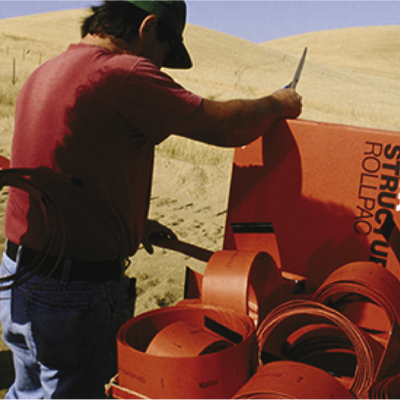
A tomografia computorizada fornece uma imagem tridimensional e espacial do objeto a inspecionar.
A imagem de TC mostra diferentes materiais como diferentes tons de cinzento (ou como diferentes cores). Para gerar uma imagem tridimensional, é obtido um grande número de imagens bidimensionais de raios X (ou cortes) em torno de um único eixo de rotação (360°).
Estas imagens de raios X são depois reformatadas como representações volumétricas de estruturas (3D) utilizando um algoritmo de reconstrução complexo.
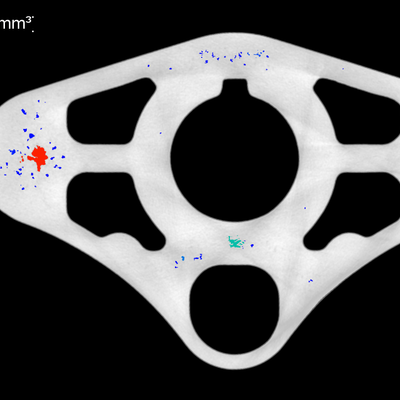
Mentor Visual iQ está mudando a maneira de inspecionar os motores
Facilidade de uso, versão de alta qualidade, bateria de longa duração e qualidade de vídeo nítida levam a ganhos de produtividade sem precedentes. Saiba como as companhias aéreas de todo o mundo estão revolucionando seus processos de inspeção para aumentar a eficiência e a confiança e proporcionar tranquilidade aos clientes.
Inspeção e metrologia de peças aditivas e compostas
A Waygate Technologies oferece uma ampla variedade de sistemas de CT grandes e pequenos que podem acelerar sua taxa de inspeção de peças aditivas e compostas, bem como a inspeção de protótipos de pequenos lotes e peças fundidas de metal leve. Os fabricantes automotivos estão recorrendo ao nosso Phoenix | Soluções de tomografia computadorizada por raios X, proporcionando alto rendimento com altos níveis de qualidade de inspeção.
A Waygate Technologies oferece uma ampla gama de produtos e serviços para aumentar a eficiência e a segurança
Desde inspeções de solda, inspeções de turbinas a gás, inspeções de tubulações até soluções de gerenciamento preditivo de corrosão (PCM), usando vários produtos de nosso portfólio, a Waygate Technologies fornece às empresas petrolíferas e petroquímicas em todo o mundo as ferramentas necessárias para manter níveis ideais de desempenho em suas plantas e ativos offshore.

